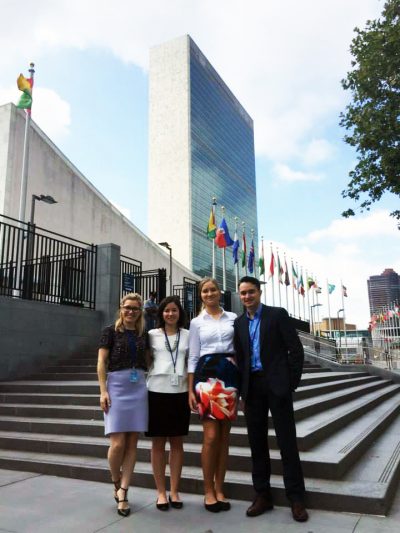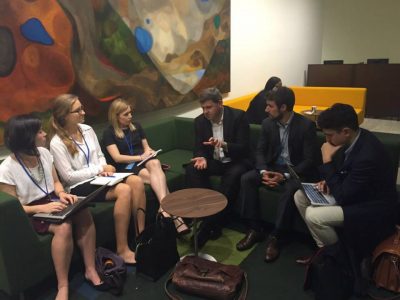
Why future generations depend on us rethinking the old age pension
Seniors must be prepared to tighten their belts if Australia’s tax and transfer system is to remain sustainable over the next 50 years, writes Stephanie Thomson.
A new intergenerational inequality index exposes that Australia’s intergenerational bargain is under threat – that working age Australians are losing the capacity to support the growing numbers of retiring seniors, as well as themselves.
The index warns that if trends of the last decade continue, working age Australian’s in 2050 could be 70% worse off than their counterparts today.

This spells bad news for both seniors and younger Australians. If our approach to the old age pension isn’t reconsidered and moderated now, we could see the welfare system crumble in the next half century.
The Intergenerational Holistic Equity Index measures improvements in the experiences of working age Australians since 2000 based on five economic, four environmental and ten overall wellbeing factors.
Indicators range from government debt, aged care assistance, technology use, and greenhouse gas emissions to capture a holistic picture of life for future generations.
The Equity Index is the result of collaboration between Global Voices Research Fellow, myself (Stephanie Thomson), and the Intergenerational Foundation, a UK charity illuminating global changes in intergenerational inequality.
The Equity Index, shown in Figure 1, paints a relatively desolate picture for future Australians. Younger, working-age Australians in 2014 were 13% worse off than their comparative cohort in 2000. A rise in the index indicates worsening conditions for future generations. If this trend continues, working Australians in 2050 will be 70% worse off.
Since 2007, the key driver of the regression in intergenerational equity has been worsening economic factors. Rising government debt, housing unaffordability and the growing costs of supporting older Australians have seen economic outcomes for younger, working age Australians worsen by an average of 2.4% every year in the new millennium.
If politicians are unable to deliver bipartisan economic remedies, younger Australians in 2050 are predicted to be almost 200% worse off in economic terms. Rethinking the old age pension is a key piece of this puzzle.
Man-made environmental change will only add fuel to the fire of worsening economic outcomes. The Equity Index measures an 8% rise in environmental depletion over the past 15 years. If improvements are not seen, the Equity Index predicts that Australians in 2050 will be 33% worse off due to the degeneration of the environment.
“Together, these factors will curb the younger cohorts’ capacity to accumulate personal wealth and to self-fund their retirement.”
But there is some good news, albeit small. Individual and societal wellbeing has improved over the last 15 years, rising 3%. This was driven by growing access to technology and participation in tertiary education. Although, reduced government spending on R&D, increasing youth unemployment and escalating pressure on the health care system has limited greater improvement in this area.
Yet, what does this mean for the old age pension?
If outcomes for working age Australians worsen 70% by 2050 as predicted, the sustainability of Australia tax and transfer system is severely threatened. Taxable, working age Australians will be relatively fewer in number, and less capable of supporting the growing number of retirees under the current policy.
The Treasury’s predicted slowdown of the Australian economy over the next 50 years will only worsen the sting. Working age Australians will have relatively less lining in their pockets, and will be forced to contribute a higher proportion of their income to pay for today’s government deficit and to subsidise the swelling costs of aged care support.
Government debt and rising healthcare costs will also stifle the wealth accumulation capacity of younger Australians. The Grattan Institute expects that younger households could be burdened with an additional $10,000 of tax for every year that debt grew between 2010 and 2014. In the Institute of Actuaries of Australia green paper, ‘Who will fund our health’, it is predicted that younger households could be paying up to 2.1 times their own health expenditure to subside older Australian’s health care in 2050.
“Now is the time for Australia to rethink its approach to the pension, or we will see future working-age Australians financially thwarted by our inaction.”
Adding these volatile ingredients together delivers a recipe that threatens long-term welfare sustainability. Together, these factors will curb the younger cohorts’ capacity to accumulate personal wealth and to self-fund their retirement. Ongoing, each successive working age generation will be increasingly disenfranchised to fill the funding gap. This exacerbating imbalance in the intergenerational bargain is likely to spark a cycle of intergenerational wealth decay.
Aged care assistance payments will always remain one of the largest and most important welfare payments, particularly for senior Australians of lower socio-economic status. However, as a society we must shift our perception of the pension away from one of entitlement. Stricter pension means testing, asset testing and eligibility requirements are needed to go hand in hand with innovation in the superannuation space to offer retirees protection in the event that they live longer than their savings allow.
Now is the time for Australia to rethink its approach to the pension, or we will see future working-age Australians financially thwarted by our inaction.
This article is based on the findings of a research partnership between Global Voices Research Fellow and UN ECOSOC Delegate Stephanie Thomson, and the Intergenerational Foundation, a UK charity and think-tank established to promote fairness across generations.
Bibliography
Armstrong, K. & Dyson, S., Who Will Fund Our Health (Green Paper), Institute of Actuaries Australia, December 2014, viewed April 2015, < http://www.actuaries.asn.au/Library/Opinion/2014/WhoWillFundOurHealth.pdf?>
Daley, J., Wood, D., Weidmann, B. & Harrison, C., The Wealth of Generations, Grattan Institute, December 2014, viewed April 2015, <http://grattan.edu.au/report/the-wealth-of-generations/>
The Australian Government the Treasury, 2015 Intergenerational Report: Australia in 2055, The Commonwealth of Australia, March 2015, viewed April 2015, < http://www.treasury.gov.au/~/media/Treasury/Publications%20and%20Media/Publications/2015/2015%20Intergenerational%20Report/Downloads/PDF/2015_IGR.ashx>
Thomson, S., Intergenerational Holistic Equity Index, Global Voices, June 2015, <http://www.globalvoices.org.au/wp-content/uploads/Intergenerational-Holistic-Equity-Index-Stephanie-Thomson.pdf>
CPD: Actuaries Institute Members can claim two CPD points for every hour of reading articles on Actuaries Digital.










